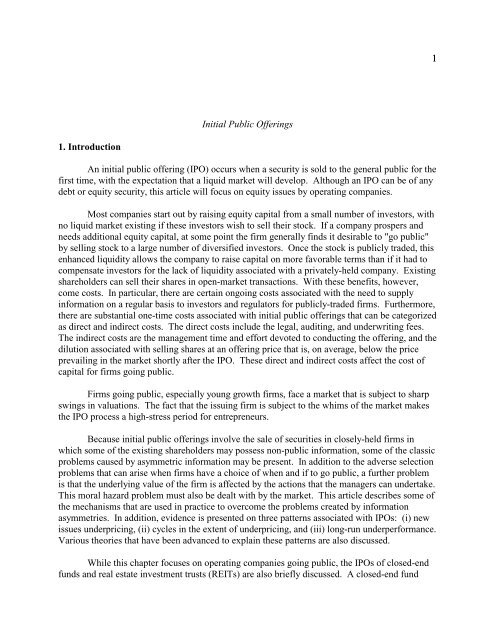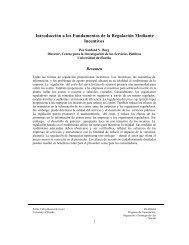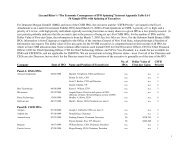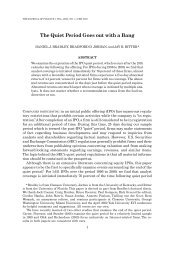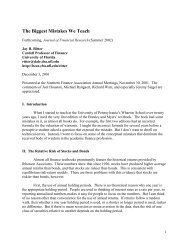Initial Public Offerings Jay R. Ritter Cordell Professor of Finance ...
Initial Public Offerings Jay R. Ritter Cordell Professor of Finance ...
Initial Public Offerings Jay R. Ritter Cordell Professor of Finance ...
Create successful ePaper yourself
Turn your PDF publications into a flip-book with our unique Google optimized e-Paper software.
1. Introduction<br />
<strong>Initial</strong> <strong>Public</strong> <strong>Offerings</strong><br />
An initial public <strong>of</strong>fering (IPO) occurs when a security is sold to the general public for the<br />
first time, with the expectation that a liquid market will develop. Although an IPO can be <strong>of</strong> any<br />
debt or equity security, this article will focus on equity issues by operating companies.<br />
Most companies start out by raising equity capital from a small number <strong>of</strong> investors, with<br />
no liquid market existing if these investors wish to sell their stock. If a company prospers and<br />
needs additional equity capital, at some point the firm generally finds it desirable to "go public"<br />
by selling stock to a large number <strong>of</strong> diversified investors. Once the stock is publicly traded, this<br />
enhanced liquidity allows the company to raise capital on more favorable terms than if it had to<br />
compensate investors for the lack <strong>of</strong> liquidity associated with a privately-held company. Existing<br />
shareholders can sell their shares in open-market transactions. With these benefits, however,<br />
come costs. In particular, there are certain ongoing costs associated with the need to supply<br />
information on a regular basis to investors and regulators for publicly-traded firms. Furthermore,<br />
there are substantial one-time costs associated with initial public <strong>of</strong>ferings that can be categorized<br />
as direct and indirect costs. The direct costs include the legal, auditing, and underwriting fees.<br />
The indirect costs are the management time and effort devoted to conducting the <strong>of</strong>fering, and the<br />
dilution associated with selling shares at an <strong>of</strong>fering price that is, on average, below the price<br />
prevailing in the market shortly after the IPO. These direct and indirect costs affect the cost <strong>of</strong><br />
capital for firms going public.<br />
Firms going public, especially young growth firms, face a market that is subject to sharp<br />
swings in valuations. The fact that the issuing firm is subject to the whims <strong>of</strong> the market makes<br />
the IPO process a high-stress period for entrepreneurs.<br />
Because initial public <strong>of</strong>ferings involve the sale <strong>of</strong> securities in closely-held firms in<br />
which some <strong>of</strong> the existing shareholders may possess non-public information, some <strong>of</strong> the classic<br />
problems caused by asymmetric information may be present. In addition to the adverse selection<br />
problems that can arise when firms have a choice <strong>of</strong> when and if to go public, a further problem<br />
is that the underlying value <strong>of</strong> the firm is affected by the actions that the managers can undertake.<br />
This moral hazard problem must also be dealt with by the market. This article describes some <strong>of</strong><br />
the mechanisms that are used in practice to overcome the problems created by information<br />
asymmetries. In addition, evidence is presented on three patterns associated with IPOs: (i) new<br />
issues underpricing, (ii) cycles in the extent <strong>of</strong> underpricing, and (iii) long-run underperformance.<br />
Various theories that have been advanced to explain these patterns are also discussed.<br />
While this chapter focuses on operating companies going public, the IPOs <strong>of</strong> closed-end<br />
funds and real estate investment trusts (REITs) are also briefly discussed. A closed-end fund<br />
1


